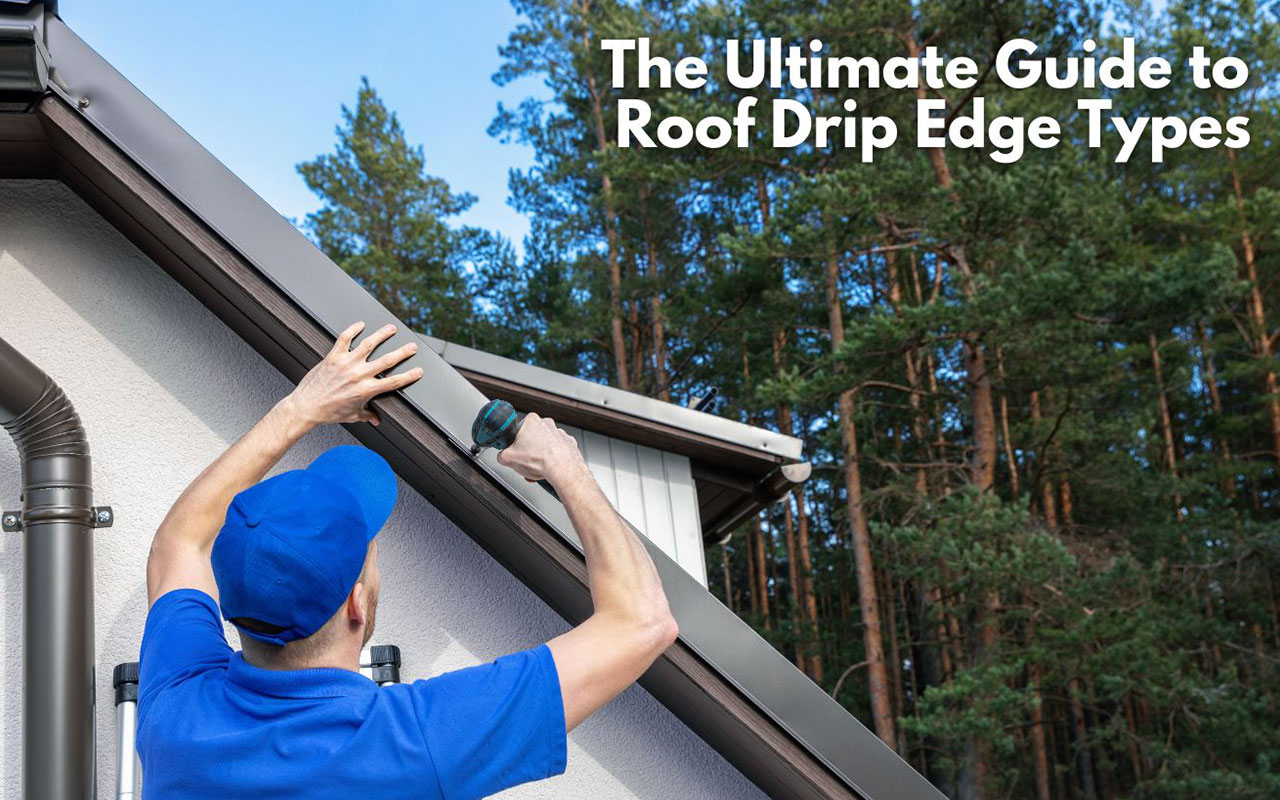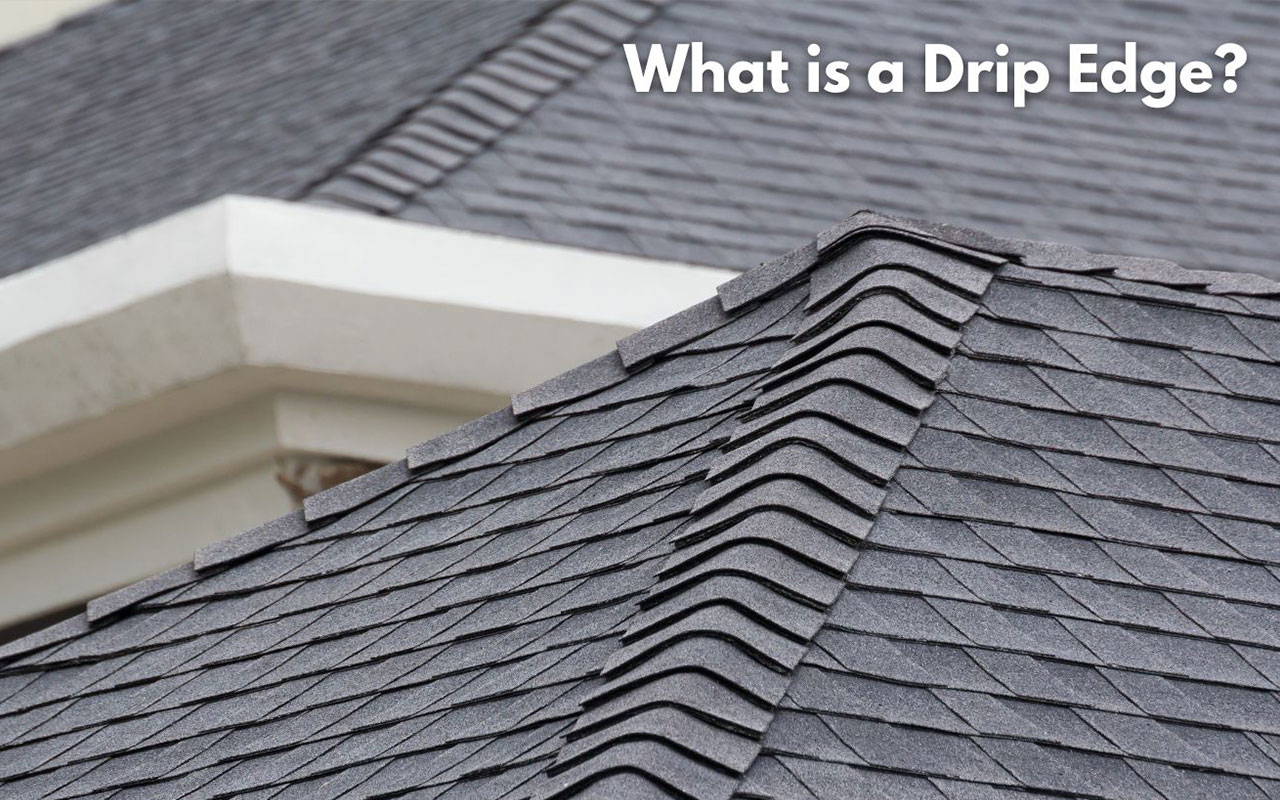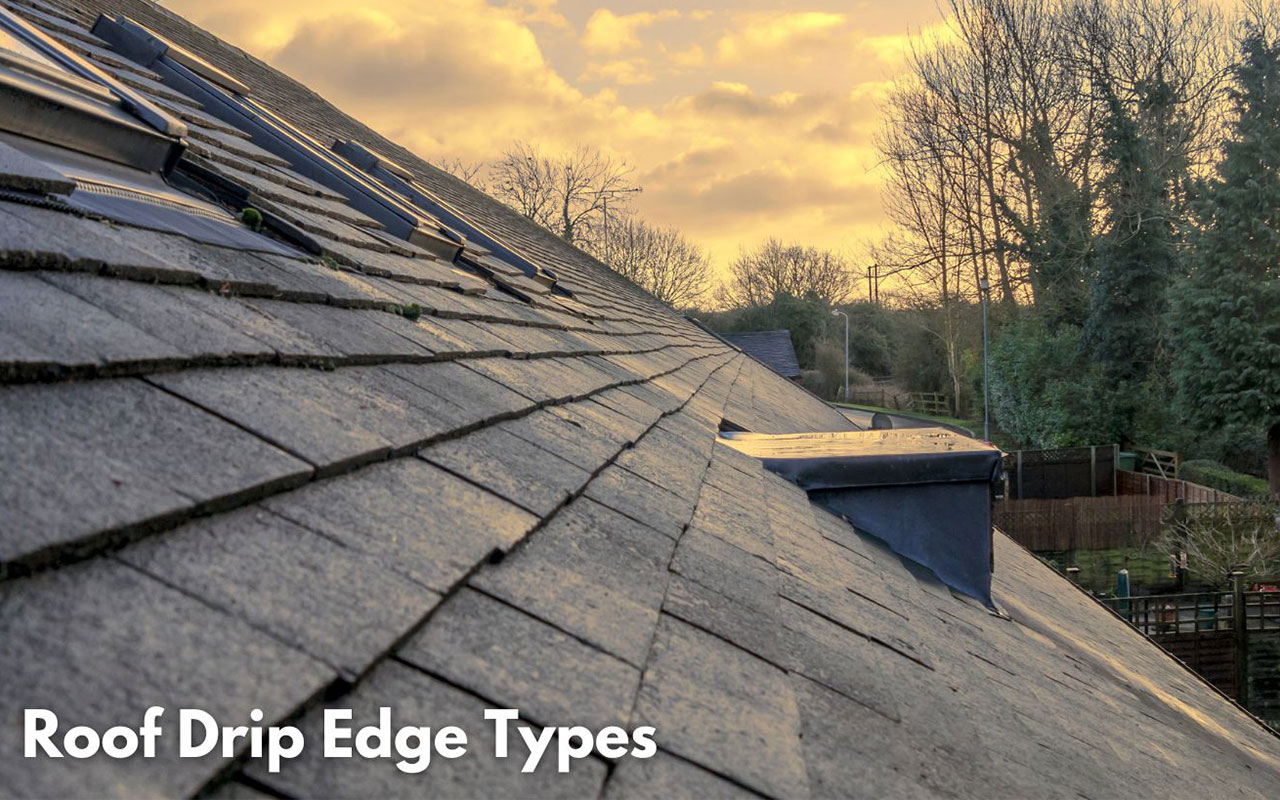The Ultimate Guide to Roof Drip Edge Types

A Roof Drip Edge may be the culprit of your home’s water damage. A drip edge is a crucial component of the flashing system on your roof. Unaware of the meaning of a flashing system? They are metal roof tiles that deflect water away from your home’s most vulnerable areas. There are many Roof Drip Edge Types that you should be aware of.
If you invest in an efficient roof flashing system, you protect your home against potentially hazardous and expensive scenarios, such as water damage, mold, rotting, and even bug infestation.
We know that a drip edge is a component of a roof’s flashing system, but how exactly does a drip edge safeguard your roof?
Continue reading as we review all the essential information about roof drip edge types.
What is a drip edge?

Before we get to know the Roof Drip Edge Types, we need to know what a Drip Edge is.
An angled roof flashing, called a drip edge most of the time, is constructed of a metal like aluminum, copper, or steel. If installed correctly, the drip edge should be on the edges of a roof around the home.
Drip edges come in three basic categories: L, C, and T, all distinguished by their comparative shapes. We will be covering the different categories in more detail below.
Why are they important?
A drip edge’s primary function is to divert water away from your roof and fascia, protecting your house and roof from water damage. In most places, a drip edge is necessary for a top to comply with the code.
If you have a correctly placed drip edge, you will enjoy many advantages as:
- Preventing soffit and fascia damage.
- Eliminating holes to keep pests and water out.
- Prevention of ice dams.
- Funnels water away from the foundation of a house.
- Prevents basement and ceiling water damage.
- Preventing water from leaking beneath roof shingles.
Roof Drip Edge Types

The purpose of all drip edges is the same, although their shapes vary according to the kind and style of the roof.
C-Style Drip Edge
A “C-Style drip edge” is a shaped metal drip edge that directs water away from roofs without fascia boards.
L-Style Drip Edge | Roof Drip Edge Types
An L-Style drip edge is an “L” shaped metal bent at a 90-degree angle.
We recommend this style of drip edge for houses with low-incline roofs because one side of the metal is underneath the roof, while the other protects the fascia.
T-Style Drip Edge
A t-style drip edge is a popular choice for many homeowners, especially those living in cold, snowy regions. T-Style drip is not like the other two styles; this is arguably the most effective at moving water flow off the roof and into the gutter.
F-Style Drip Edge | Roof Drip Edge Types
An f-style drip edge is also known as a “gutter apron.”
We suggest installing this type when adding a drip edge to an existing roof. It’s a fantastic alternative for new roofs as well.
Roofing Repair Services
We do not advise attempting this task independently unless you have substantial roofing knowledge. If you don’t do it right the first time, trying to DIY a project like this could cost you a lot in the long run.
Instead, think about working with a local, licensed, and certified roofing contractor to build or repair a drip edge.


